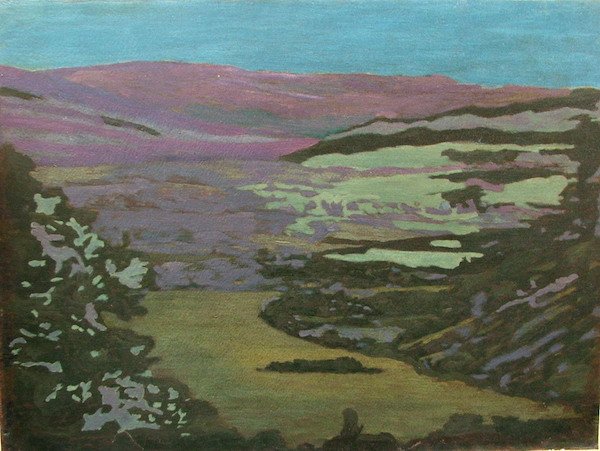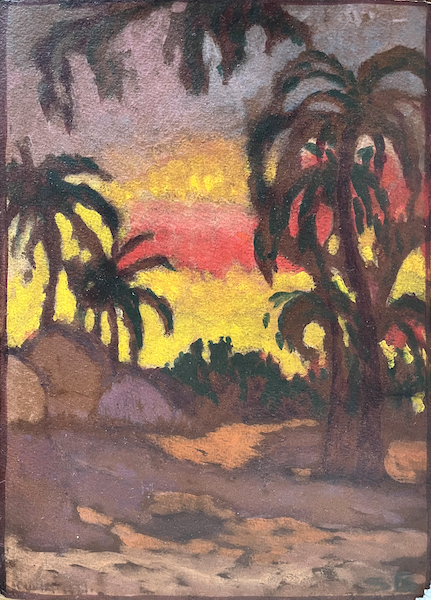Biography
Erzsébet Sass Brunner was a Hungarian painter. In 1908, she was a student at the painting school of Ferenc Sass Brunner, who came to Nagykanizsa at that time, and whom she married the following year. Zsigmond Stróbl Kisfaludi was his master at the College of Fine Arts.
She regularly appeared in solo (1911, 1913, 1924, 1927, 1935) and group exhibitions in Nagykanizsa, but she also presented herself in the capital, several times in the Art Gallery and Műcsarnok, and in 1921 in the National Salon (together with her husband). He exhibited his works in several Transdanubia cities. At the beginning of the 1920s, she turned to industrial art and created works of leather decoration. During this time, she lived in Budapest and gradually turned towards mysticism. In 1921, she and her husband had a collection exhibition at the National Salon.
In 1929, she settled with her daughter Erzsébet Brunner in Calcutta and then in New Delhi. They lived in Japan between 1935 and 1937. They exhibited their pictures not only from India, but also from Hungary. Their book Mystic India was published, with forewords written by Rabindranath Tagore and Mahatma Gandhi. In 1938, they sailed to the United States via Hawaii. Their pictures have been exhibited in San Francisco, Los Angeles, Chicago and New York. They arrived in London later this year. Here they first met Javaharlal Nehru (whose portrait he later painted when she returned to India) and dr. Radhakrishnan, the Maharaja of Baroda, who asked them to return to India and paint a collection exclusively for the Baroda Museum and Gallery.
During World War II, the British interned the two Hungarian painters (as citizens of an enemy country) in a military prison camp. They were later allowed to live in a small house in Nainital. They did not return to Delhi after the war either - only to hold exhibitions in the winter. It was during this period that Erzsébet Sass Brunner created her most beautiful pictures of the Himalayas.
Erzsébet Sass Brunner died on February 19, 1950 of pneumonia. Her daughter organized a memorial exhibition of her collection in Delhi. Her pictures reached the Hungarian public in the 1970s: Indira Gandhi brought four of their pictures with her during her visit. In 1979, the Hungarian Cultural Institute established in Delhi organized the first Brunner exhibition; they also published two of their books, Vision of India and A Painter's Pilgrimage. In 1985, Erzsébet Brunner received the Padma Sri state award from Indian President Gianni Szingh.
Her works can be found in several museums (e.g.: Indira Gandhi National Center for Arts, National Gallery of Modern Art, New Delhi)


